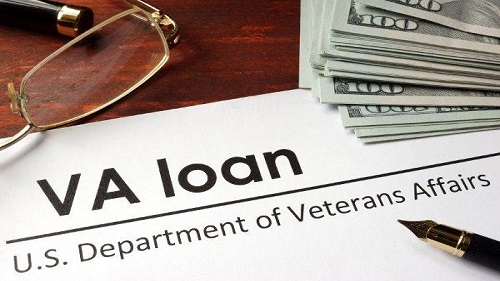.png)
Mortgage Dove
6 Ways To Get Rid Of Private Mortgage Insurance (PMI)
If you bought a home with less than 20% down, chances are you added private mortgage insurance (PMI) to your conventional loan. PMI might hike up your monthly payment by a few hundred dollars, but the good news is you don’t have to keep paying it forever. Before considering getting rid of PMI, let's first understand what it is. Private Mortgage Insurance (PMI) is insurance you pay when you buy a house with a mortgage and put down less than 20%. It helps your lender if you can't repay the loan or face foreclosure. You include PMI in your monthly mortgage payment. Without it, lenders might not give mortgages to people with low down payments because of the risk. In other words, PMI makes it easier for homeowners to get a mortgage. PMI can increase your monthly mortgage cost significantly. If you're struggling and want to cut down on these payments, there are six essential methods to remove PMI. The Homeowners Protection Act of 1998, known as the "PMI Cancellation Act," offers a straightforward way to end. By reaching specific thresholds, homeowners can expect automatic or final termination of PMI. Private Mortgage Insurance automatically ends once your Loan-to-Value (LTV) ratio hits 78% or your mortgage balance equals 78% of the home’s purchase price. Alternatively, sticking to your original payment schedule can lead to PMI termination at the halfway mark of your loan term. This option suits those with conventional mortgages who maintain a good payment record, achieving 22% equity or reaching the halfway point in their loan term. Once your mortgage balance reaches 80% of your home's original value, you can ask to cancel Private Mortgage Insurance under the PMI Cancellation Act. You can save a lot of money by taking this step. For example, suppose you have 20% equity in a $300,000 home. In that case, you can request cancellation when your remaining balance hits $240,000 — that's $6,000 less than the 78% equity needed. If you're keeping up with payments, you can find out the date you'll reach 80% equity on your disclosure form or by asking for your service. However, taking action on your part is crucial. How to Cancel Private Mortgage Insurance: If you've got some extra money, consider putting it towards your mortgage payments to reach that 20% equity goal sooner. Paying extra monthly on your loan's principal can decrease your balance, which means you'll pay less in interest over time. Even a modest $50 more per month can significantly reduce your loan balance and the total interest you pay. To determine when you might cancel, multiply your home's original purchase price by 0.80. Homeowners with extra cash can use this approach to reach 20% equity faster. You can achieve this by making larger mortgage payments, paying more frequently, or contributing a lump sum towards the loan. Always check with your lender for their preferred methods. A few years back, rates hit a historic low of 3%, making refinancing a way to cut monthly payments and interest costs. Rising home prices often meant new loans were below 80% of home value, However, with recent rate hikes, refinancing just to cancel might not be worth it. Nevertheless, it's worth considering if you're close to 20% equity. You could opt for a new home appraisal or a PMI-free loan. You might even consider "piggybacking" loans or government-backed ones like USDA or VA loans. Refinancing is best if your home’s value has substantially increased since your last mortgage. But remember, weigh the closing costs, new interest rates, and potential savings against today’s higher borrowing costs and get rid of them. However, this strategy might not be the best move for most people now. Data shows over 90% of homeowners with a mortgage have rates below 6%, better than what today’s rates offer. Reassess your home's value in a hot real estate market. Due to rising prices, your home equity might exceed the loan payment schedule by 20%. If you've owned your home for five years with a loan balance of 80% or less of its new value, you could cancel. The mortgage balance should be under 75% for two years of ownership. Appraisal costs range from $500 to $700 for a single-family home. Some lenders may accept a cheaper broker opinion. Professional appraisals offer unbiased evaluations but cost more upfront. Spending a bit now can save you more in future payments. National home values surged by about 30%, and they rose even higher in hot areas. If your home's value has increased enough, discuss a new appraisal with your lender. Upgrading your home can help you build equity, especially if you've added modern features or renovated key areas like the kitchen, garage, windows, or bathrooms. These improvements could increase your home's value in a new appraisal, pushing you closer to the 20% equity mark needed to cancel PMI. If you' re near that threshold, investing in significant home improvements might elevate your home's value sufficiently to qualify for Private Mortgage Insurance cancellation after a reappraisal. Private Mortgage Insurance is insurance that helps your lender if you can't repay your loan. It doesn't protect you, but it lets you put down a smaller down payment. As you own more of your home, you might be able to stop paying and save money each month. If you' ve got a regular loan and own 20% of your home, talk to your lender to cancel. If you have an FHA loan or lender-paid insurance, you must refinance to stop those payments.What is Private Mortgage Insurance (PMI)?
6 Ways to Remove Private Mortgage Insurance(PMI)
The Bottom Line
"Mortgage Dove makes home financing convenient for every American. You can count on us to provide a home buying experience tailored to your personal needs and financial situation. We strive to give you the peace of mind that your home financing goals can be achieved.”

Mortgage®
www.mortgagedove.com



-and-how-does-it-work.png)